
Sarah Zielinski wanted to be a marine biologist when she was growing up, but after graduating from Cornell University with a B.A. in biology, and a stint at the National Science Foundation, she realized that she didn’t want to spend her life studying just one area of science — she wanted to learn about it all and share that knowledge with the public. In 2004, she received an M.A. in journalism from New York University’s Science, Health and Environmental Reporting Program and began a career in science journalism. She worked as a science writer and editor at the Journal of the National Cancer Institute, the American Geophysical Union’s newspaper Eos and Smithsonian magazine before becoming a freelancer. During that time, she started her blog, Wild Things, and moved it to Science News magazine, and then became an editor for and frequent contributor to Science News Explores. Her work has also appeared in Slate, Science, Scientific American, Discover and National Geographic News. She is the winner of the DCSWA 2010 Science News Brief Award and editor of the winner of the Gold Award for Children’s Science News in the 2015 AAAS Kavli Science Journalism Awards, “Where will lightning strike?” published in Science News Explores. In 2005, she was a Marine Biological Laboratory Science Journalism Fellow.

Trustworthy journalism comes at a price.
Scientists and journalists share a core belief in questioning, observing and verifying to reach the truth. Science News reports on crucial research and discovery across science disciplines. We need your financial support to make it happen – every contribution makes a difference.
All Stories by Sarah Zielinski
-
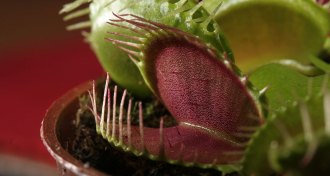 Plants
PlantsTo catch a meal, a Venus flytrap counts to five
It takes two taps to trigger a Venus flytrap to close. Another three, a new study finds, are needed to turn on genes for producing enzymes.
-
 Animals
AnimalsMeet the bugs that call your house home
A census of arthropods in human homes finds plenty of diversity — but few pests.
-
 Animals
AnimalsWhales are full of toxic chemicals
For decades, scientists have been finding troublesome levels of PCBs, mercury and other toxic chemicals in whales and dolphins.
-
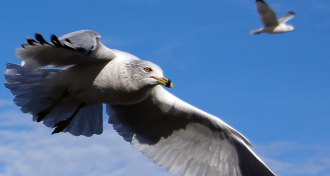 Animals
AnimalsAlien species fly on the wings of ducks and other waterbirds
Ducks, geese and other waterbirds can transport nonnative species and help alien invaders establish themselves.
-
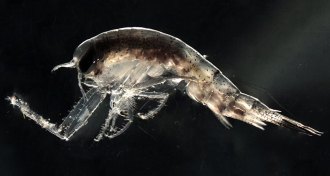 Animals
AnimalsThe moon drives the migration of Arctic zooplankton
In the darkness of the Arctic winter, the moon replaces the sun as the driver of zooplankton migration, a new study finds.
-
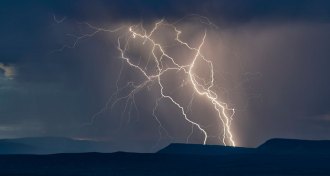 Animals
AnimalsAnimals get struck by lightning, too
Scientists found a group of sea lions apparently dead from a lightning strike. But those animals certainly aren’t the first animals to die that way.
-
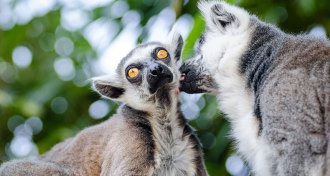 Animals
AnimalsLemurs chat only with their best friends
Ring-tailed lemurs maintain friendships built with grooming by calling to each other, a new study finds.
-
 Animals
AnimalsFog ferries mercury from the ocean to land animals
Scientists have traced mercury in the waters of the Pacific Ocean to animals, including mountain lions, in California.
-
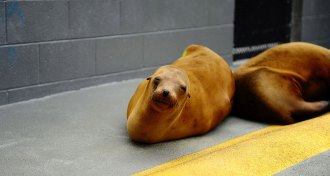 Animals
AnimalsAlgal toxin impairs sea lion memory
California sea lions that have brain damage linked to domoic acid poisoning have impaired spatial memory, a new study finds.
-
 Animals
AnimalsNew movie asks viewers to care about whale hunters. Will they?
A new movie tells the tale of sailors shipwrecked by a whale. But it’s hard to feel sorry for the people trying to kill the animal.
-
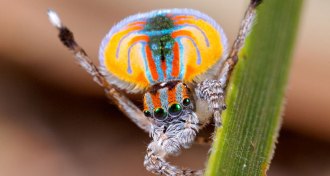 Animals
AnimalsFor male peacock spiders, the best dancers get the girl
Male peacock spiders dance to attract the ladies. And those that perform the best get the girl, a new study finds.
-
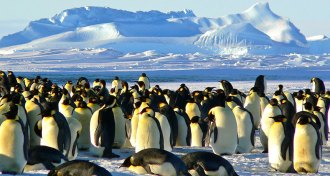 Animals
AnimalsA single penguin can break up a huddle
A new study documents how penguins regulate body temperature by forming huddles and breaking groupings apart.